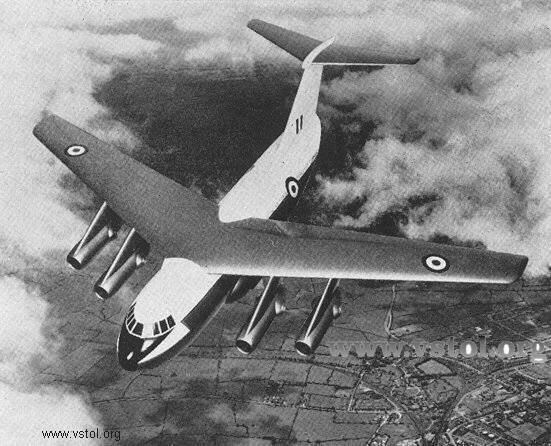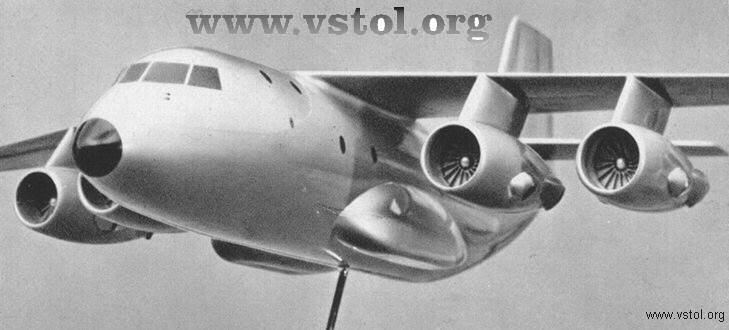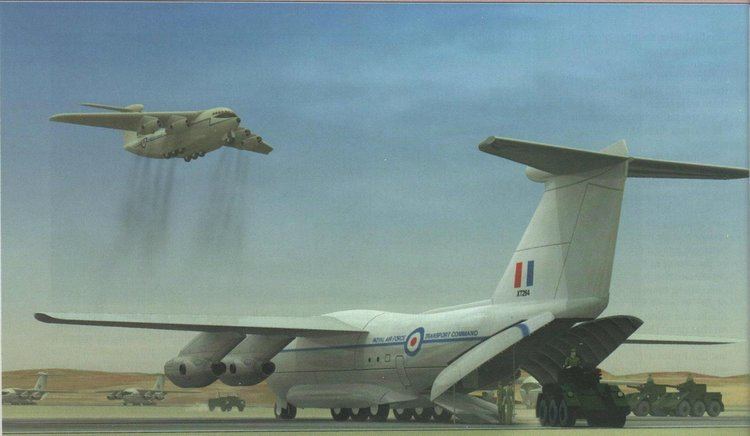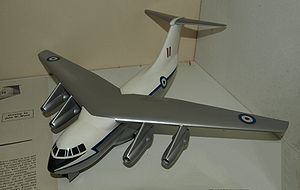Wingspan 41 m Engine type Rolls-Royce Medway | Length 32 m | |
 | ||
The Armstrong Whitworth AW.681, also known as the Whitworth Gloster 681 or Hawker Siddeley HS.681, was a projected British long-range STOL military transport aircraft design of the early-1960s by Armstrong Whitworth Aircraft and was to be capable of development to VTOL performance. The AW.681 was designed to meet the NATO specification NBMR-4.
Contents

Design and development

Operational Requirement 351 was issued to meet a requirement for the Royal Air Force for a medium-range freighter to replace the Beverley and Hastings. There were proposals from British Aircraft Corporation and Hawker Siddeley, the former offering the BAC.222 based on the Lockheed Hercules and the BAC.208 with deflected-thrust engines and lift fans. Armstrong Whitworth's design was selected.

The aircraft featured a swept shoulder-mounted wing and a high T-tail. The rear fuselage was upswept with loading doors and a ramp. Four Rolls-Royce RB.142 Medway engines with vectored thrust nozzles were to be mounted on pylons under the wings which were to feature boundary layer control with blown flaps, leading edges, and ailerons. The Medway engines would have given STOL performance only. The use of an additional 18 6,000 lbf (26.7 kN) RB.162-64 lift engines or replacement of the Medways with four Bristol Siddeley Pegasus ducted-flow turbofans was proposed to obtain VTOL capability. The Pegasus 5-6 would have been rated at around 18,000 lbf (80 kN).

In March 1962 the government announced the go-ahead for the HS.681 with a project study and a prototype to fly in 1966. With a load of 60 troops it was expected that 50 aircraft would be ordered. Some of the production work would be sub-contracted to Short Brothers in Belfast. In 1964 when a Labour Party formed a government it announced a review of military programmes. The project was cancelled in February 1965 when the government announced that it would buy the American Lockheed Hercules instead.
Armstrong Whitworth made a last-minute effort to promote a non-STOL version of the HS.681, designated the HS.802 which used the wings and engines from the HS.801 Nimrod. As a consequence of the cancellation the Armstrong Whitworth factory in Coventry was closed, with a loss of 5,000 jobs.
Specifications (proposed STOL)
Data from Armstrong Whitworth Aircraft since 1913.
General characteristics
Performance
